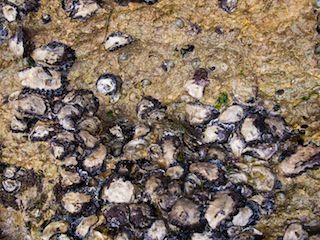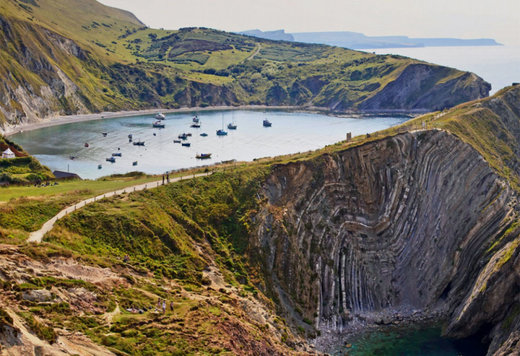
But make no mistake: we may not know the day-to-day eating habits of our ancestors, but we know some things. And we can use what we know, drawing on several lines of evidence, to make some educated estimates.
The best place to start is, well, the place where it all started: East Africa, the cradle of human evolution. More specifically, let's look at the Lake Turkana, Rift Valley, Omo River part of Ethiopia and Tanzania, which is where the oldest known remains of modern homo sapiens - dating back 200,000 years - were found. It's a beautiful place. I mean just look at it. No wonder we hunkered down there for thousands of years.
So, what's good to eat there?
A landmark paper examined this very question, using the available data to construct a series of dietary patterns that might have characterized the typical intake ranges of the very first homo sapiens living in East Africa - the ancestors of us all. Their conclusions?
- Average intakes of moderate-to-high protein (25-29% of calories with a range of 8-35%), moderate-to-high fat (30-39%, range of 20-72%) and moderate carbohydrates (39-40%, range of 19-48%).
- Regarding fats, SFA was 11.4-12%, MUFA 5.6-18.5%, and PUFA 8.6-15.2% of total calories. Pretty balanced overall.
- PUFA was far more varied and diverse than the kind of PUFA typically eaten in modern diets, with very little linoleic acid (just 2.3-3.6% of calories) and far more arachidonic acid (2.54-8.84%) and long-chain omega-3s (2.26-17%).
What were the most important foods eaten by these early humans in East Africa, and what can we glean from it?
Fish and Shellfish
The Rift Valley hosts a number of freshwater lakes teeming with fish and shellfish rich in docosahexaenoic and arachidonic acids. These fats are necessary for fetal and early infant brain development. When modern local women eat fish from those same lakes, their breast milk becomes extremely rich in both DHA and AA; this leads to improved pregnancy and early infancy outcomes. The modern pelagic fish from the Rift Valley lakes are high in DHA, EPA, calcium, and other important nutrients. And that's what matters: the nutrients.
They were also relatively easy to gather, requiring no special tools and very little caloric expenditure. Shellfish are especially easy to pick up.
Takeaway: The density of brain-and-baby-specific nutrients found in fish and shellfish made these foods perhaps the most important to the earliest humans. Don't skimp on the long-chain PUFAs.
Land Animals
East African hominids have a long and storied history with the resident megafauna. As far back as 2 million years ago, we were hunting (not just scavenging) them. 500,000 years ago, we were wielding formidable thrusting spears. By at least 280,000 years ago, we had developed throwing spears to prey on the crocodiles, hippos, and other large delicious beasts roaming the Rift Valley. Clearly, we've always known how to obtain and consume animals (and yes, "always" is correct because we've been eating animals as long as we've been us), whether through scavenging, persistence hunting, or ambush predation.
Upon making (or stealing) a kill, the homo sapiens in East Africa wasted nothing. Markings on bones indicate expert butchery. Meat was completely removed. Bones were stripped of marrow and smashed to get every last drop. Heads were prized for the "fatty, nutrient-rich, energy-dense within-head food resources." Adipose tissue and offal - all of it - was eaten. They weren't just eating eland loin, in other words, but utilizing everything.
Takeaway: Eating the entire animal isn't just economical, it's the kind of "meat consumption" we're strongly adapted to. Diverging from that may be problematic. Eating only muscle meat and eschewing the fat, bones, and offal is likely evolutionary discordant.
Tubers
Important parts of early human diets, tubers likely acted as fallback foods for when the hunt was poor or fish were scarce. It's crucial to understand that these were wild, fibrous tubers, though - not the creamy, smooth russet potatoes that make the best darn mash you've ever tasted. An analysis of wild tubers currently present in this area and utilized by the Hadza (the modern hunter gatherers who live on the same ancestral Tanzanian lands) found that they contain only between 19 and 26 grams of starch per 100 grams of tuber, along with a ton of prebiotic fiber (PDF). Some of that starch was likely resistant as well, boosting the prebiotic count even higher and lowering the amount of digestible starch.
East African wild tubers therefore provide a moderate bolus of digestible starch with a sizable portion of prebiotic substrate, resulting in moderate glucose loads and improved glucose tolerance from the fermentation of prebiotic fiber.
Takeaway: Tubers were important foods for early humans, but not necessarily for the glucose they provided. The primary feature of wild East African tubers that set them apart from modern cultivated tubers was the indigestible portion, the prebiotic fiber and resistant starch that fed, nurtured, and cultivated the hugely crucial microbiome living inside our guts.
What's the point of all this? Simple. To pay homage to the past. What went down hundreds of thousands of years ago in a far-off region in East Africa isn't just "the past," after all. It's our past. It's our story. Your story. And even though there were and are many more stories still to come from other places and times, those first humans squinting into the sun as it dipped down below the edge of the known world, turning toward the fire and the dance and the feast, slurping up some freshwater mollusk or sharing a split, roasted femur with a pal or lover - they made us who we are today. Their everyday habits, their dietary choices, their responses to the demands of the day all unwittingly paved our way, for better or for worse.
It's good to acknowledge that.



Reader Comments
to our Newsletter